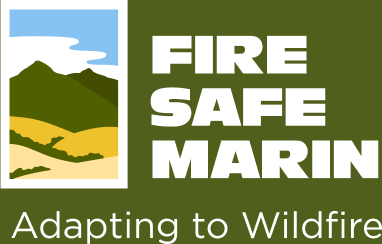IN THE EVENT OF AN EMERGENCY THIS SITE IS NOT MONITORED. FOR CURRENT INFORMATION GO TO HTTPS://EMERGENCY.MARINCOUNTY.GOV.
Chimneys and Wildfire Safety
Chimneys and Wildfire Safety: What Every Homeowner Should Know
As wildfires become more frequent and intense due to climate change and urban expansion into forested areas, homeowners must stay proactive in protecting their properties. One often overlooked but critical aspect of wildfire safety is the chimney. While chimneys are essential for venting fireplaces, wood stoves, and even some furnaces, they can also become ignition sources if not properly maintained or protected. This article breaks down how chimneys can pose wildfire risks and what you can do to keep your home safer.
The Hidden Risk of Chimneys in Wildfire-Prone Areas
Chimneys are vertical structures that can act like funnels—either drawing dangerous embers into your home or allowing sparks from your fireplace to escape and ignite nearby vegetation. During a wildfire, wind-driven embers can travel miles ahead of the fire front, and if they enter your chimney, they may ignite combustible materials inside your home. Conversely, a poorly screened chimney can emit burning embers, putting surrounding homes and vegetation at risk.
Key Ways Chimneys Contribute to Fire Risk
- Unscreened Chimney Caps
Without a proper spark arrestor, embers from a fire inside your home can escape through the chimney, becoming a threat to nearby vegetation or structures. - Creosote Buildup
Over time, chimneys—especially those used with wood-burning appliances—accumulate creosote, a flammable residue that can ignite under high heat or from embers entering the chimney. - Debris Blockages
Leaves, bird nests, and other debris can collect in the chimney, becoming dry fuel for embers or direct flames. - Poor Structural Integrity
Cracked masonry or metal components can allow heat and flames to escape, igniting the structure around the chimney.
Best Practices for Chimney Wildfire Safety
To reduce wildfire risk associated with chimneys, homeowners should follow these safety measures:
1. Install a Chimney Cap with Spark Arrestor
This is your first line of defense. A chimney cap with a spark arrestor—typically a mesh screen with openings of 1/8 inch prevents embers from leaving or entering the chimney.
2. Regular Inspections and Cleanings
Have your chimney inspected and cleaned at least once a year by a certified chimney expert,, especially before wildfire season. This helps remove creosote and ensures the chimney is structurally sound.
3. Clear Vegetation
Maintain a defensible space of at least 10 feet around your chimney, removing branches, shrubs, or anything else flammable that could catch fire from escaping sparks.
4. Use Fire-Resistant Roofing and Chimney Materials
If you’re building or renovating, opt for fire-rated chimney liners and masonry. Metal flues and properly sealed joints also improve resistance to heat and flame.
5. Close the Damper When Not in Use
A closed damper helps prevent embers from entering the home during a wildfire. Just be sure to open it fully before using the fireplace.
Conclusion
Chimneys can be beautiful and functional features in a home, but they come with responsibilities—especially when you live in a wildfire-prone area. With regular maintenance, smart design choices, and a little awareness, you can significantly reduce your wildfire risk and protect your home, family, and community.







